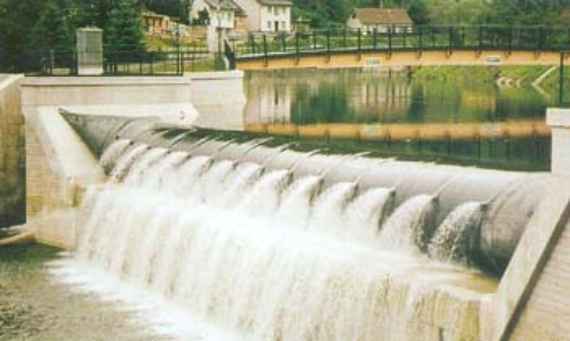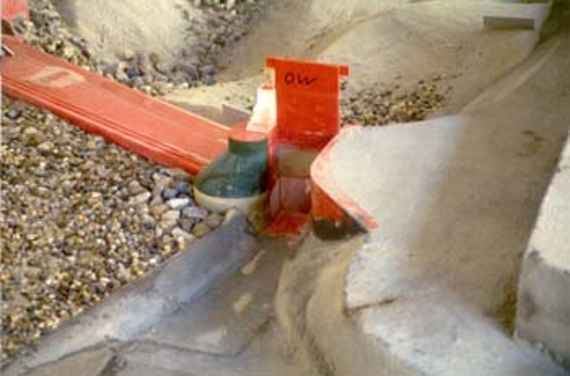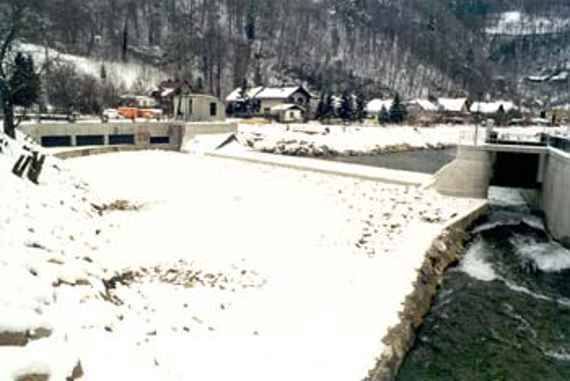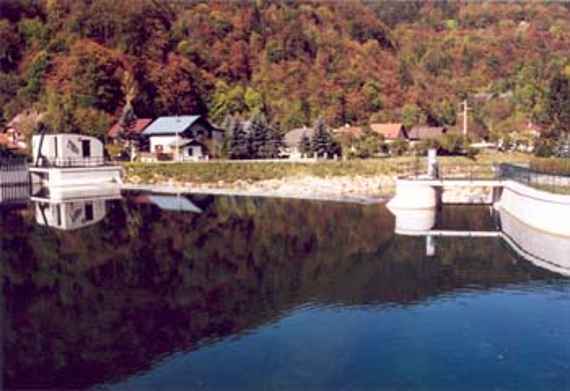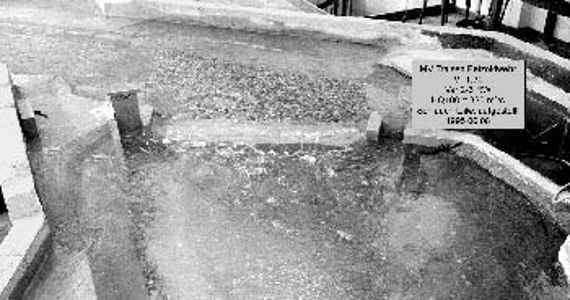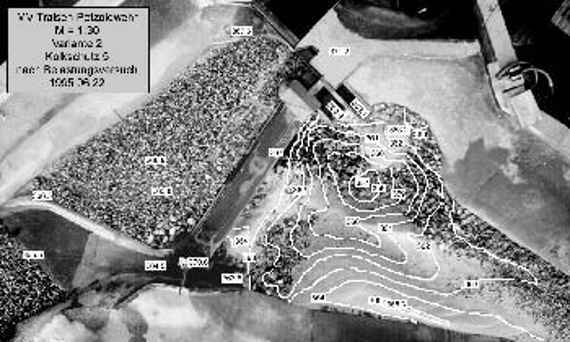An old power station on the Traisen river near Lilienfeld/Marktl (Lower Austria) was in need of renovation. Additionally the old weir system did not provide sufficient flood protection for the population. So settlement areas, commercial areas and roads were at risk of flooding.
Due to the intensive land use, the dense settlements along the river and the lack of retention areas, the conditions for improving the flood protection were difficult. The old weir system was also not able to guarantee flood protection.
In the course of the planning for the renovation of the power plant as well as the extension of the flood protection, the institute was commissioned to do a study with a physical model.
The contents of the study were:
- Optimization of the planned weir system (Petzold weir) with regard to required flow capacity and bed load transport
Water level regulation at the weir
The water level at the weir is regulated by a rubber body mounted on a fixed weir body. During normal operation the rubber dam weir is inflated with water and dams up the river Traisen. In the case of a flood the rubber body can be emptied to allow more water to flow over the weir. The rubber dam weir influences the water level and bed load transport upstream of the weir. The bedload transport over the weir is important both for flood protection (prevention of sedimentation upstream of the weir or erosion downstream of the weir) and for river ecology (gravel banks, dynamic river). The weir system and the arrangement of the bottom outlets for bed load transport were optimised by a physical model.
Physical model of Petzold weir
Petzold weir - construction site
The newly built Petzold weir
2. Determination of the HQ100 water level:
The determination of the water level of a centennial flood in the critical settlement area is an result of the project optimization (flood safety). In the course of the study existing problems have been identified and measures to improve the flood protection have been proposed. The physical model test made it possible to limit the necessary measures to a minimum extent, which has a positive effect on construction costs and the appearance of the river Traisen at the site.
3. Development of a natural stilling basin downstream the Petzold weir:
The stilling basin is necessary for the stability of the weir system. A natural basin is preferable to a concrete basin because of its limnological and financial advantages. In the physical model, the necessary stability measures for the natural stilling basin were determined under consideration of the limnological requirements (the formation of sand or gravel banks, deep and shallow water zones).
In the course of the study it was found that the river Traisen in the area of the Petzold weir is at risk of erosion in the event of an extreme flood. For this reason, it became necessary to extend the investigation programme and include the development of measures for stabilising the riverbed. The result of the investigation was a layer of coarse stones for stabilising the river bed. The supplementation of these stones is cost-effectively and rather non-intrusive to aquatic ecology compared to other bed stabilization measures.
Flow pattern in the physical model with partially inflated rubber dam
Depth ratios in the stilling basin downstream of the weir

